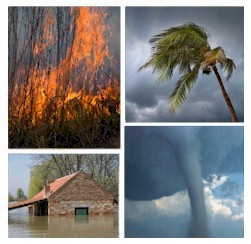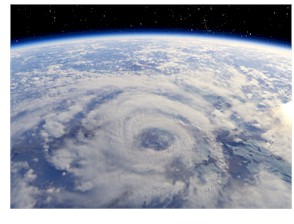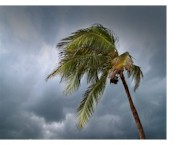|
|


Disaster Alert Systems and Services
 This section of our technical library presents articles written about Emergency Alert Systems and Disaster Recovery definitions, terms and related information.
This section of our technical library presents articles written about Emergency Alert Systems and Disaster Recovery definitions, terms and related information.
The 911Broadcast emergency notification and alert service can deliver a large number of phone calls using a network of phone systems employing digital phone lines simultaneously. Should a disaster such as a snow storm, wild fire or flood hit your area, 911Broadcast systems can alert your community quickly providing specific instructions if an evacuation is required.
This service is available using our emergency broadcasting systems. If a dangerous chemical spill occurs in your community, you can target specific areas to call. If a severe snow storm hits your area, your community can be notified of school closings or event cancellations.
Contact DSC Today for a FREE analysis and quote and to learn more about our emergency notification systems and services.
10 Tips For Winter Weather Driving
By Kyle Parks
Dr. William Heegaard knows what's coming after this year's first snowfall: more business for the emergency room at Hennepin County Medical Center in Minneapolis. "It's almost like everyone forgets how to drive when the snow hits again," says Heegaard, a doctor in the emergency medicine department. "People forget they have to cut their speed in half to be safe."
To keep those emergency rooms less busy this winter, follow these 10 tips for safe winter driving.
- Respect the winter weather. "Plan extra time for a trip in the winter," says AAA spokesman Mitch Fuqua. "A trip that might take 30 minutes in May might take you 45 minutes or an hour in the winter."
- Wear your safety belts. "You have to be protected, no matter what season it is," says Carole Guzzetta of the National Safety Council's Safety Belt Coalition. Make it a rule: Everyone must be buckled up before the vehicle moves.
- Don't drink and drive. At least 30 percent of those winter-driving crashes that lead to visits to Hennepin County Medical Center involve alcohol, Heegaard says. Remember that you have less reaction time in hazardous conditions.
- Winterize your vehicle's safety kit. The kit should include some special additions, such as a blanket, a small shovel to dig out snow, sand to help get traction if needed, a flashlight, a first-aid kit, jumper cables, ice scraper/brush and lock deicer.
- Conduct a pre-trip inspection. Check the antifreeze. Make sure you have proper tires to handle the weather. Be sure you have enough gas for each trip. Wipers must be in good shape to handle snow and ice. Remember to first unstick them from the frozen glass.
- Be ready for changing conditions. Make sure you have good all-season tires that can handle different types of weather. Check with your auto mechanic or a professional at a tire store to discuss your options. In high snow and ice areas, you may need more than all-season tires.
- Don't get SUV overconfidence. "The bigger the vehicle, the tougher it is to stop," says Liz Neblett of the National Highway Traffic Safety Administration. While a sport-utility vehicle might get through some tough conditions more easily, it won't stop more quickly, and it may roll over if you make a turn too fast.
- Know how to react to trouble. If you have antilock brakes, don't pump them. Press them down as hard as you can. If you go into a skid, turn the steering wheel in the direction you want the front of the car to go; that will keep the vehicle from skidding out of control. Then prepare to counter steer 2 or 3 times.
- Leave some space. Follow the 3-second rule. After the vehicle in front of you passes a stationary object, you should be able to count for 3 seconds before your vehicle passes the same object. Add 1 more second for each driving condition that deteriorates.
- Defuse road rage. One-fourth of drivers in a recent AAA survey admitted they have expressed anger at other drivers. To avoid becoming a road-rage statistic, leave more room between yourself and other drivers. Stay out of the left lane if you're going slow. And don't play games on the road.
Severe Weather Warnings And Alerts Phone Service
 Should a severe weather condition occur in your area, our phone services can help warn your community. With our emergency notification phone service, you can broadcast warning messages to thousands of households in your community, warning of catastrophic disasters including severe weather and storms.
Should a severe weather condition occur in your area, our phone services can help warn your community. With our emergency notification phone service, you can broadcast warning messages to thousands of households in your community, warning of catastrophic disasters including severe weather and storms.
Messages can be simultaneously delivered in just minutes using our network of phone systems and services. Pre-recorded warning messages can be played giving households information regarding the severe weather location and whether a community evacuation is planned or necessary.
You can send a broadcast warning to specific neighborhoods or communities in the event of a severe weather storm and provide priority delivery of these messages to those nearest the severe weather disturbance. Multiple messages can be delivered to different members of the community based upon proximity to the weather alert.
Calls can be directed to operators that are standing by to handle special individual emergencies.
Messages can also be broadcast seeking volunteers or special assistance from emergency personnel.
 Other applications include warning residents when the danger of severe weather conditions is at a high level. Travel and activity restrictions can likewise be broadcast using this service.
Other applications include warning residents when the danger of severe weather conditions is at a high level. Travel and activity restrictions can likewise be broadcast using this service.
Severe weather warning messages sent to households in this fashion can be simple warnings with specific or general instructions. If the community needs feedback from the call, an interactive response can be programmed into the message allowing the person to either acknowledge the call or to contact someone. Messages can vary based upon proximity to the event, with different degrees of broadcast warning and instructions.
To learn more about our severe weather and emergency response / disaster recovery phone service, please visit our Emergency Broadcast System web page.
Contact DSC Today for a FREE analysis and quote and to learn more about our emergency notification systems and services.
|




 This section of our technical library presents articles written about Emergency Alert Systems and Disaster Recovery definitions, terms and related information.
This section of our technical library presents articles written about Emergency Alert Systems and Disaster Recovery definitions, terms and related information.
 Should a severe weather condition occur in your area, our phone services can help warn your community. With our emergency notification phone service, you can broadcast warning messages to thousands of households in your community, warning of catastrophic disasters including severe weather and storms.
Should a severe weather condition occur in your area, our phone services can help warn your community. With our emergency notification phone service, you can broadcast warning messages to thousands of households in your community, warning of catastrophic disasters including severe weather and storms.
 Other applications include warning residents when the danger of severe weather conditions is at a high level. Travel and activity restrictions can likewise be broadcast using this service.
Other applications include warning residents when the danger of severe weather conditions is at a high level. Travel and activity restrictions can likewise be broadcast using this service.